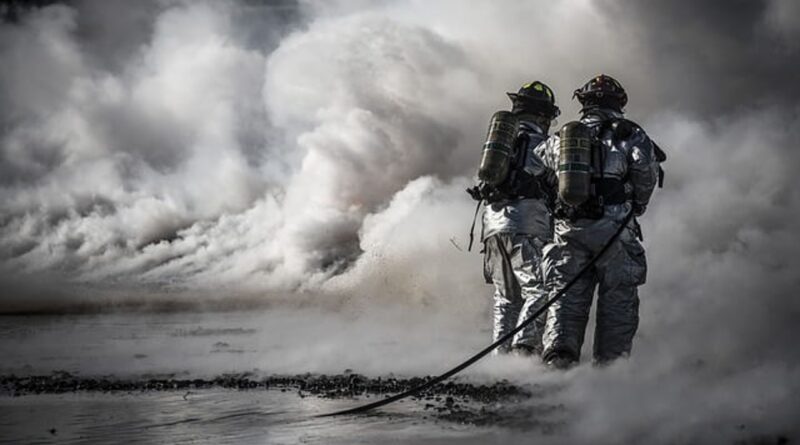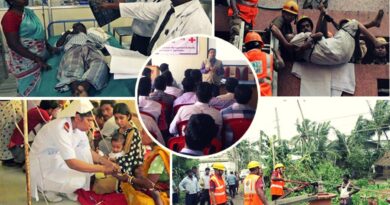National Disaster Management Plan (NDMP) 2016
The Government of India, for the first time, released its first National Disaster Management Plan in 2016. The Vision of the Plan is to “Make India disaster resilient, achieve substantial disaster risk reduction, and significantly decrease the losses of life, livelihoods, and assets – economic, physical, social, cultural and environmental – by maximizing the ability to cope with disasters at all levels of administration as well as among communities.”
It has been aligned broadly with the goals and priorities set out in the Sendai Framework for Disaster Risk Reduction, the Sustainable Development Goals 2015-2030 and the Paris Agreement on Climate Change at COP-21. While Sendai framework is the first international agreement adopted within the context of post 2015 development agenda, the Sustainable Development Goals also recognize the importance of disaster risk reduction as integral to sustainable development. The Paris Agreement notes the urgent need to take into account the increasing frequency of extreme weather events due to global climate change.
Contents
Major highlights of the Plan
• For each hazard, the approach used in this national plan incorporates the four priorities enunciated in the Sendai Framework into the planning framework for Disaster Risk Reduction under the five Thematic Areas for Actions:
✓ Understanding Risk
✓ Inter-Agency Coordination
✓ Investing in DRR – Structural Measures
✓ Investing in DRR – Non-Structural Measures
✓ Capacity Development
It covers all phases of disaster management: Prevention, Mitigation, Response and Recovery and covers human induced disasters like chemical, nuclear etc. It plans for short medium and long run respectively 5, 10, and 15 years to deal with disasters.
Integrating approach with role clarity
✓ It provides for horizontal and vertical integration among all the agencies and departments of the Government and also spells out the roles and responsibilities of all levels of Government right up to Panchayat and Urban local body level in a matrix format.
✓ Ministries are given role for specific disasters e.g. Ministry of Earth Sciences is responsible for Cyclones
✓ The plan has a regional approach, which will be beneficial not only for disaster management but also for development planning.
✓ It is designed in such a way that it can be implemented in a scalable manner in all phases of disaster management.
Major activities
✓ It identifies major activities such as early warning, information dissemination, medical care, fuel, transportation, search and rescue, evacuation, etc. to serve as a checklist for agencies responding to a disaster.
✓ It also provides a generalised framework for recovery and offers flexibility to assess a situation and build back better.
Information & media regulation
✓ To prepare communities to cope with disasters, it emphasises on a greater need for Information, Education and Communication activities.
✓ It calls for ethical guidelines for the media for coverage of disasters as well as selfregulation.
✓ The plan wants the media to respect the dignity and privacy of affected people.
✓ Also, in a move aimed to stop rumours and spread of panic, the plan directed the authorities to schedule regular media briefing (depending on the severity of the disaster) and designate a nodal officer for interacting with the media on behalf of the government
• It lays focus on training, capacity building and incorporating best international practices.
Significance of the NDMP
• It provides a framework and direction to the government agencies for all phases of disaster management cycle.
• It recognizes the need to minimize, if not eliminate, any ambiguity in the responsibility framework. It, therefore, specifies who is responsible for what at different stages of managing disasters.
• It is envisaged as ready for activation at all times in response to an emergency in any part of the country.
• It is designed in such a way that it can be implemented as needed on a flexible and scalable manner in all phases of disaster management:
✓ Mitigation (prevention and risk reduction),
✓ Preparedness,
✓ Response and
✓ Recovery (immediate restoration to build-back better).
Shortcomings of National Disaster Management Plan, 2006
The National Disaster Management Plan, 2006 is devoid of many important elements that make a good and robust action plan.
Drawbacks
▪ It fails to lay down a clear and practical roadmap. It is too generic in its identification of the activities to be undertaken by the central and states governments for disaster risk mitigation, preparedness, response, recovery, reconstruction, and governance.
▪ The plan refrains from providing a time frame for undertaking these activities beyond vaguely prescribing that these must be taken up in short, medium, mid- and long-term basis.
▪ The plan does not project the requirement of funds needed for undertaking these activities, nor does it provide any clue as to how funds shall be mobilised for this purpose.
▪ The plan further does not provide any framework for monitoring and evaluation of the plan.
▪ The plan is aligned with the Sendai Framework for Disaster Risk Reduction and Sustainable Development Goals, but unlike in the Sendai Framework or the SDGs, the plan does not set any goals or targets, nor does it spell out how the Sendai goals and targets shall be achieved.
Therefore, the national plan needs to be supplemented by national roadmaps for disaster resilience with clear goals, targets, timeframe, and ideas about how resources shall be mobilised for its implementation.



